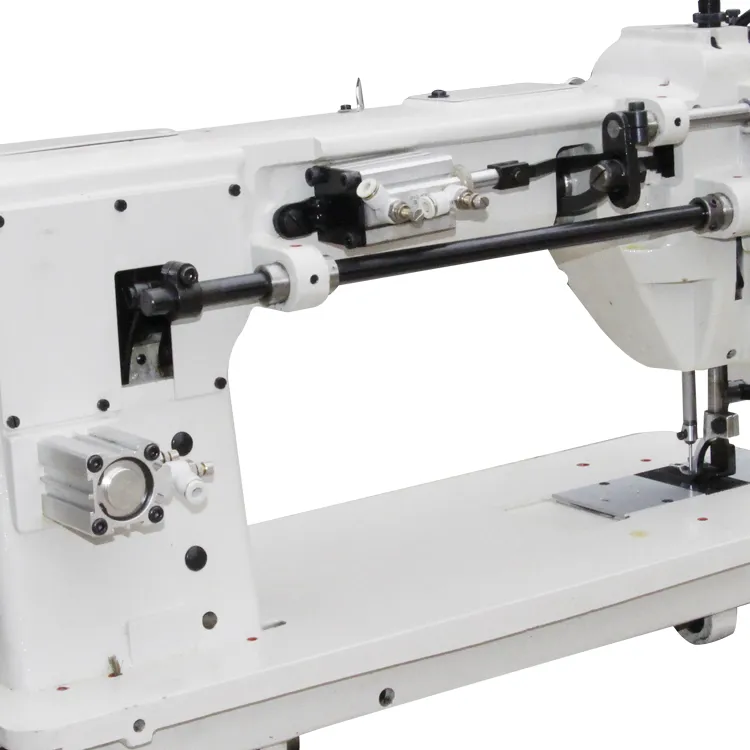High-Performance Zig Zag Sewing Machines for Industrial Applications and Versatile Fabric Handling
The Industrial Zig Zag Machine Revolutionizing Fabric Handling and Stitching
In the realm of textile manufacturing, efficiency and precision are paramount. Among the myriad of machines that have emerged to enhance these attributes, the industrial zig zag machine stands out as a pivotal innovation. This specialized sewing machine, designed to create zig zag stitches, plays a crucial role in various applications, from garment production to upholstery.
The concept of zig zag stitching dates back to the late 19th century but has evolved significantly over the years. Today, industrial zig zag machines are engineered for high-speed operation, durability, and intricate stitching capabilities. Their primary function is to create decorative and functional stitches that can stretch and adapt to the fabric's movement, making them ideal for sewing knitwear or elastic materials.
One of the key advantages of the industrial zig zag machine is its versatility. These machines are capable of producing a wide range of stitch widths and lengths, allowing manufacturers to customize their output for different types of fabrics and design specifications. This flexibility is particularly valuable in the fashion industry, where trends can shift rapidly, and the demand for unique designs is constant.
Additionally, the zig zag stitch itself offers numerous benefits. Unlike straight stitches, which can break under tension, zig zag stitches provide a more robust seam that can withstand the rigors of wear and tear. This feature is especially important in products that are subjected to stress, such as outdoor gear or sportswear. The zig zag pattern also allows for the finishing of raw edges, which prevents fraying and enhances the longevity of the garment.
industrial zig zag machine

In terms of operation, modern industrial zig zag machines are often equipped with advanced technology that boosts productivity. Many models feature programmable settings that allow operators to pre-select stitch patterns and lengths, reducing setup time between projects. Automated systems can also manage thread tension and cutting, ensuring consistent quality across large production runs. These innovations not only streamline the manufacturing process but also reduce labor costs and minimize waste.
Sustainability has also become a significant focus in the textile industry, and the industrial zig zag machine aids in this initiative. By utilizing materials more efficiently and minimizing the need for secondary finishing processes, manufacturers can decrease their environmental impact. Moreover, the durability of zig zag stitches means garments last longer, reducing the frequency of replacements and fostering a more sustainable consumption model.
Despite the many advantages, operating an industrial zig zag machine requires a certain level of skill and knowledge. Operators must understand fabric types, machine settings, and troubleshooting techniques to ensure optimal performance. As such, training programs have become essential in the industry, preparing workers to harness the full potential of these sophisticated machines.
Looking ahead, the future of the industrial zig zag machine appears promising. Innovations in automation, computerization, and material technology are set to further enhance their capabilities. As the industry embraces the Internet of Things (IoT), machines are becoming increasingly interconnected, allowing for real-time monitoring and data analysis. This advancement could lead to even greater efficiencies and quality control in textile production.
In conclusion, the industrial zig zag machine is more than just a piece of equipment; it is a cornerstone of modern textile manufacturing. Its ability to produce secure, flexible stitches while accommodating high-speed production makes it indispensable in various sectors. As the industry continues to evolve, these machines will undoubtedly play a vital role in shaping the future of fabric handling and stitching, benefiting manufacturers and consumers alike. The journey of the zig zag machine exemplifies how innovation can drive progress in the ever-changing landscape of textile production.
-
Industrial Cylinder Arm Sewing Machine: Revolutionizing Heavy-Duty SewingNewsJul.28,2025
-
Cylinder Arm Sewing Machine: Perfect for Special Sewing ApplicationsNewsJul.28,2025
-
Cylinder Bed Sewing Machine: Essential for Sewing Complex MaterialsNewsJul.28,2025
-
Heavy Duty Sewing Machine: The Essential Tool for Industrial ApplicationsNewsJul.28,2025
-
Computerized Pattern Sewing Machine: Revolutionizing Precision StitchingNewsJul.28,2025
-
Heavy Duty Industrial Sewing Machine: Power Meets PrecisionNewsJul.28,2025
-
Leather Sewing Machine: The Industrial Standard for Tough MaterialsNewsJul.18,2025





























